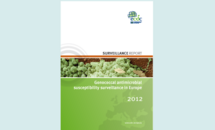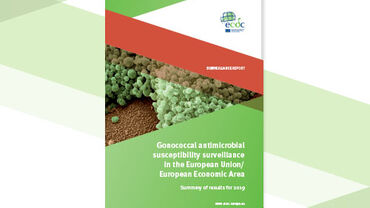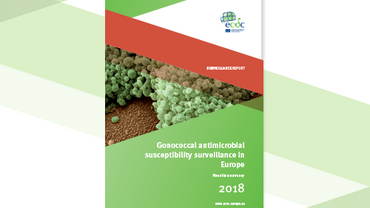Gonococcal antimicrobial susceptibility surveillance in Europe, 2012
This report summarises the surveillance results for Neisseria gonorrhoeae antimicrobial susceptibility in the EU/EEA. In 2012, 20 EU/EEA Member States participated in Euro-GASP. A total of 1 927 isolates were collected and tested. Overall, levels of antimicrobial resistance declined in 2012. This decline, however, may be short-lived, and efforts should continue to keep gonorrhoea a treatable infection.
Executive summary
The establishment of a European sexually transmitted infection (STI) surveillance network by the European Centre for Disease Prevention and Control (ECDC) greatly strengthened the surveillance of Neisseria gonorrhoeae (NG) antimicrobial susceptibility in the EU/EEA. The major elements of ECDC’s approach to NG surveillance are: biannual decentralised testing, stronger efforts to increase the number of participating countries, the inclusion of more gonococcal isolates, the collection of epidemiological and behavioural variables, and the continuation of an external quality assurance (EQA) scheme for gonococcal antimicrobial susceptibility.
During 2012, the European Gonococcal Antimicrobial Surveillance Programme (Euro-GASP) followed a biannual decentralised and centralised testing model, which calls for participating laboratories to collect gonococcal isolates between April and May and between October and November. For centralised testing, susceptibility testing was performed on all isolates by Etest or agar dilution for the following antimicrobials: cefixime, ceftriaxone, ciprofloxacin, azithromycin, spectinomycin and gentamicin. Participating laboratories that fulfilled a predefined set of criteria took part in decentralised testing, performed in the participant’s own facilities.
In 2012, 20 EU/EEA Member States participated in Euro-GASP, 10 of which did so in decentralised testing. A total of 1 927 isolates were collected and tested. The majority of gonococci (84%) were collected from samples from men. The age range of the patients was less than one year to 78 years, with a median of 28 years; interquartile range was 23 to 37 years, and 33% of patients were younger than 25 years, with men who have sex with men (MSM) and male heterosexuals significantly older than women.
The site of specimen collection was mainly genital (83%), followed by rectal (10%) and pharyngeal (5%). When information on previous diagnosis of gonorrhoea was available, 17% had previously been diagnosed with the disease. Twenty-three per cent of the patients were concurrently diagnosed with chlamydia. When sexual preference was known, 59% stated that they were heterosexual, and 41% said they were MSM. Regarding HIV status, 14% were HIV positive, and 90% of those were MSM.
Applying a breakpoint of >0.125 mg/L, a lower proportion of tested isolates showed decreased susceptibility to cefixime in 2012 (3.9%, compared with 7.6% in 2011). Isolates with this phenotype were detected in 14 countries, three fewer than in 2011. In 2012, patients who acquired a strain displaying decreased susceptibility to cefixime were more likely to be heterosexual and younger than 25 years. Three isolates with decreased susceptibility to ceftriaxone (>0.125 mg/L) were detected compared with 10 in 2011. Rates of ciprofloxacin resistance remained stable (50.1% in 2012, 48.7% in 2011), and azithromycin resistance has continued to decrease (4.5% in 2012, down from 5.3 % in 2011). Three isolates displayed high-level resistance to azithromycin (≥256 mg/L). The minimum inhibitory concentration (MIC) distribution of gentamicin continues to offer hope that gentamicin could be considered for therapy in the future. Overall, the distribution of resistance is similar across patient groups and specimen types, with one exception: ciprofloxacin resistance is associated with heterosexuality, no concurrent chlamydia infection, and age (>25 years).
Nineteen countries participated in the gonococcal antimicrobial resistance EQA scheme. The EQA has continued to document high comparability between participants, which in turn raises confidence in Euro-GASP with respect to the quality and comparability of gonococcal antimicrobial susceptibility testing, particularly for decentralised testing.
The fact that decreased susceptibility levels to cefixime and ceftriaxone remain low is encouraging and may extend the life span of the last remaining treatment options for gonorrhoea across Europe. However, the currently observed lower levels of antimicrobial resistance may be short-lived, and efforts should continue to keep gonorrhoea a treatable infection.
Download






